SDK Checklist
Upgrading your SDK version is crucial to ensure the optimal performance and functionality of your application. To facilitate a smooth transition, we've compiled a comprehensive checklist. Please follow these steps to verify the upgrade's success and maintain the integrity of your app's analytics and user experience.
For information on how to check the most recent SDK version, please visit our SDK Changelog.
SDK Upgrade Checklist
- Verify Session Visibility in Dashboard
- Ensure that sessions that are being tested on your Staging environment are visible in the dashboard with the new SDK version by testing it via: Wifi, mobile data and using a simulator and a real device if possible.
This can be done directly in the Sessions section inside the dashboard. They will be available a couple of minutes after you send the application into the background.
This can be done directly in the Sessions section inside the dashboard. They will be available a couple of minutes after you send the application into the background.
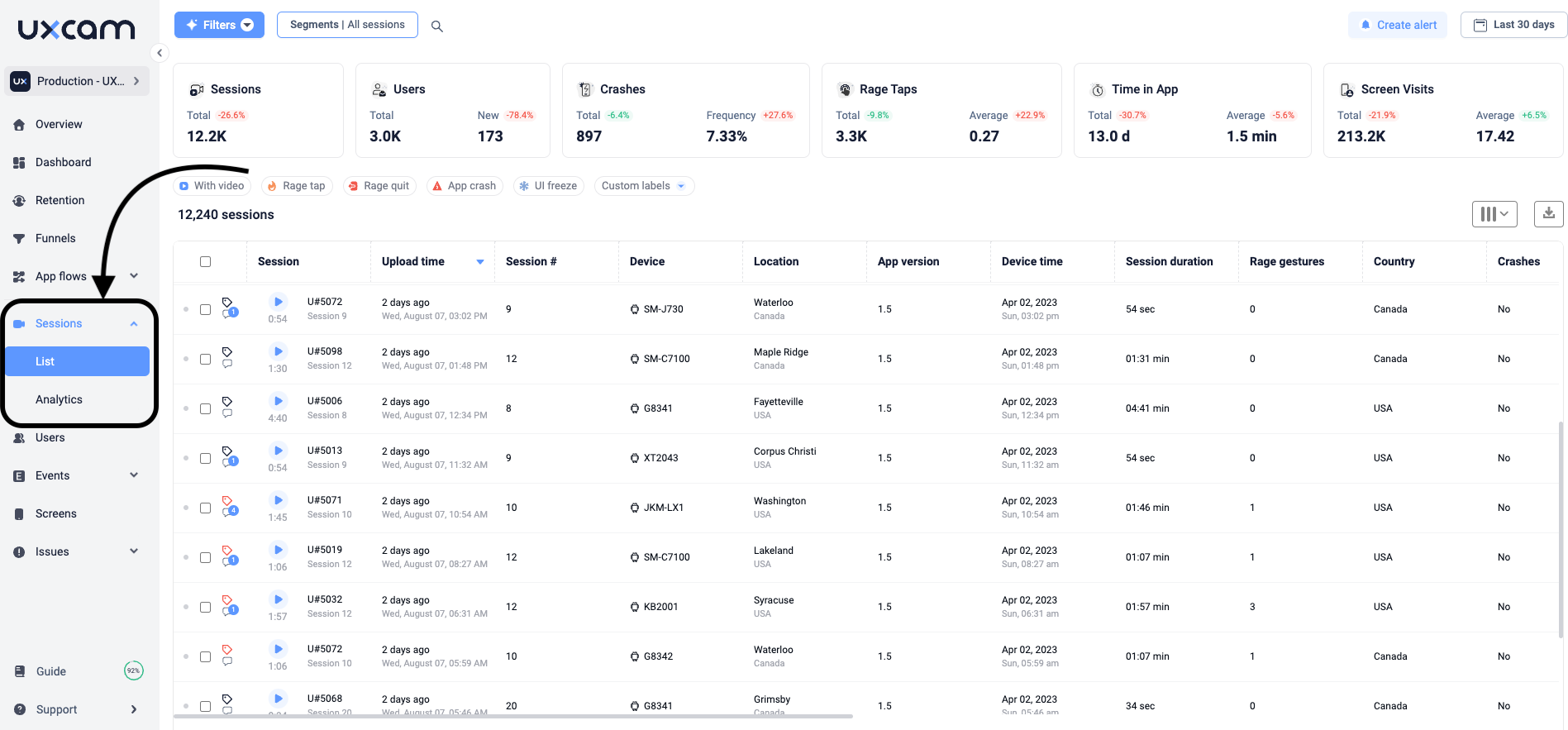
- Verify Video Availability
- Confirm that videos associated with the sessions are visible and correctly linked.
Test the playback functionality to ensure videos load and play as expected.
This can be done in the same place (Sessions List), if you click on a session, verify that it contains the video and please verify that the playback functionality works smoothly.
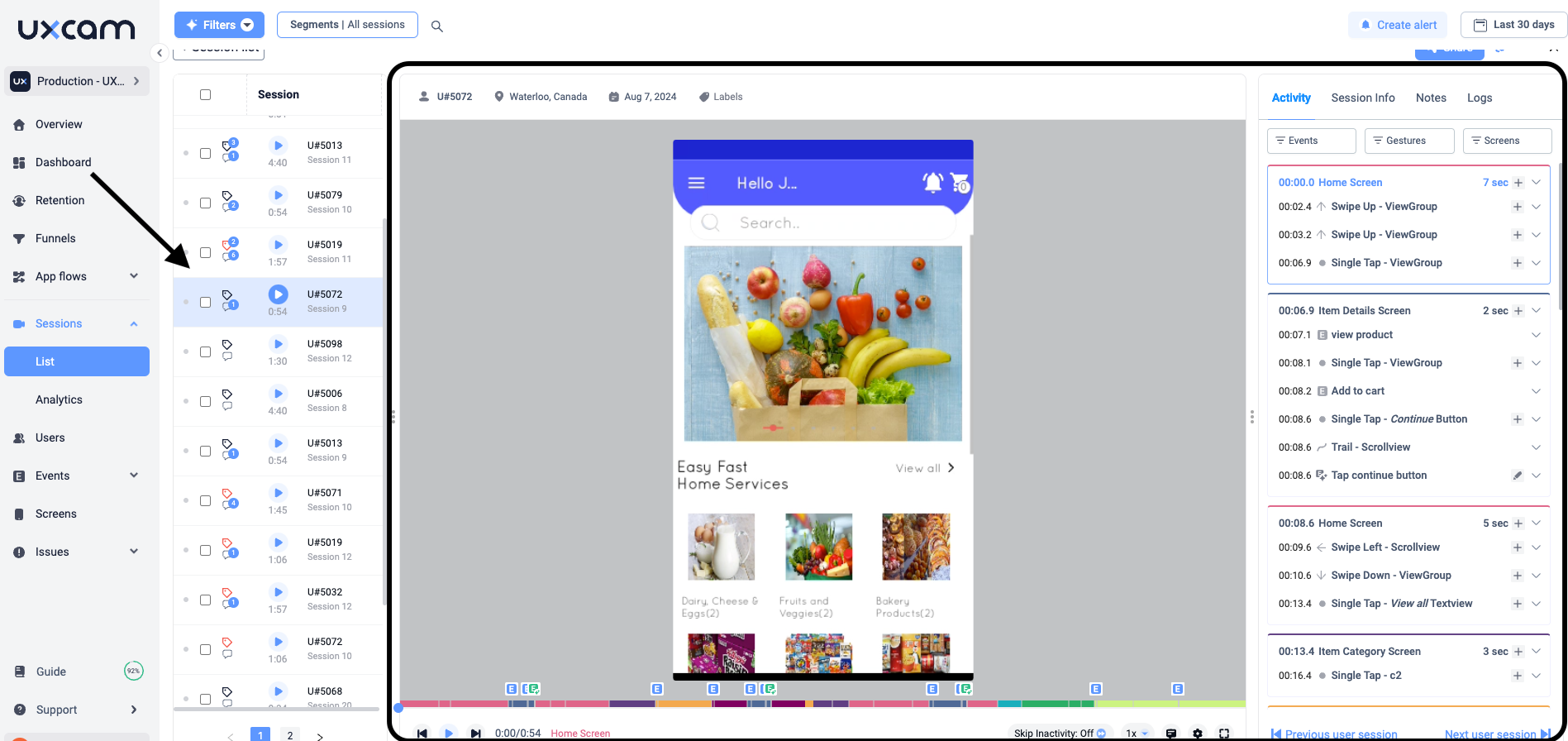
- Check Occlusion and Blurring Settings
- If your application uses occlusion or blurring settings, verify that these configurations remain intact and are still applied correctly.
- Test multiple scenarios such as scrolling and navigating between screens to ensure privacy settings are consistently enforced.
Verification steps:
In case you have occlusion settings directly from your dashboard, you can go into your application settings to verify the rules being applied to specific screens:

Depending on the rule being applied (Blur or occlude) you will need to verify in your staging environment that those rules are being applied correctly. This is an example where the blurring rule is being applied:
- Assess Performance and Resource Consumption
- Monitor the performance and resource consumption of your application post-upgrade.
- If you notice any significant increases in resource usage or performance issues, attach the time profiler and memory profile of your app and contact our support team at [email protected].
- Verify Screen Tagging
- For manually tagged screens, ensure that all tags remain consistent and accurate. The Heatmaps representation should make reference for its own screen.
- If your application utilizes automatic screen tagging, verify that the tagging mechanism continues to function correctly and that no changes have occurred.
This can be verified directly on the right panel of a session, I will be under Activity information (1), where you can see the screen names and its interactions going along with its video, or in the Screens section (2), where you can analyze the screen names and their Heatmap individually.
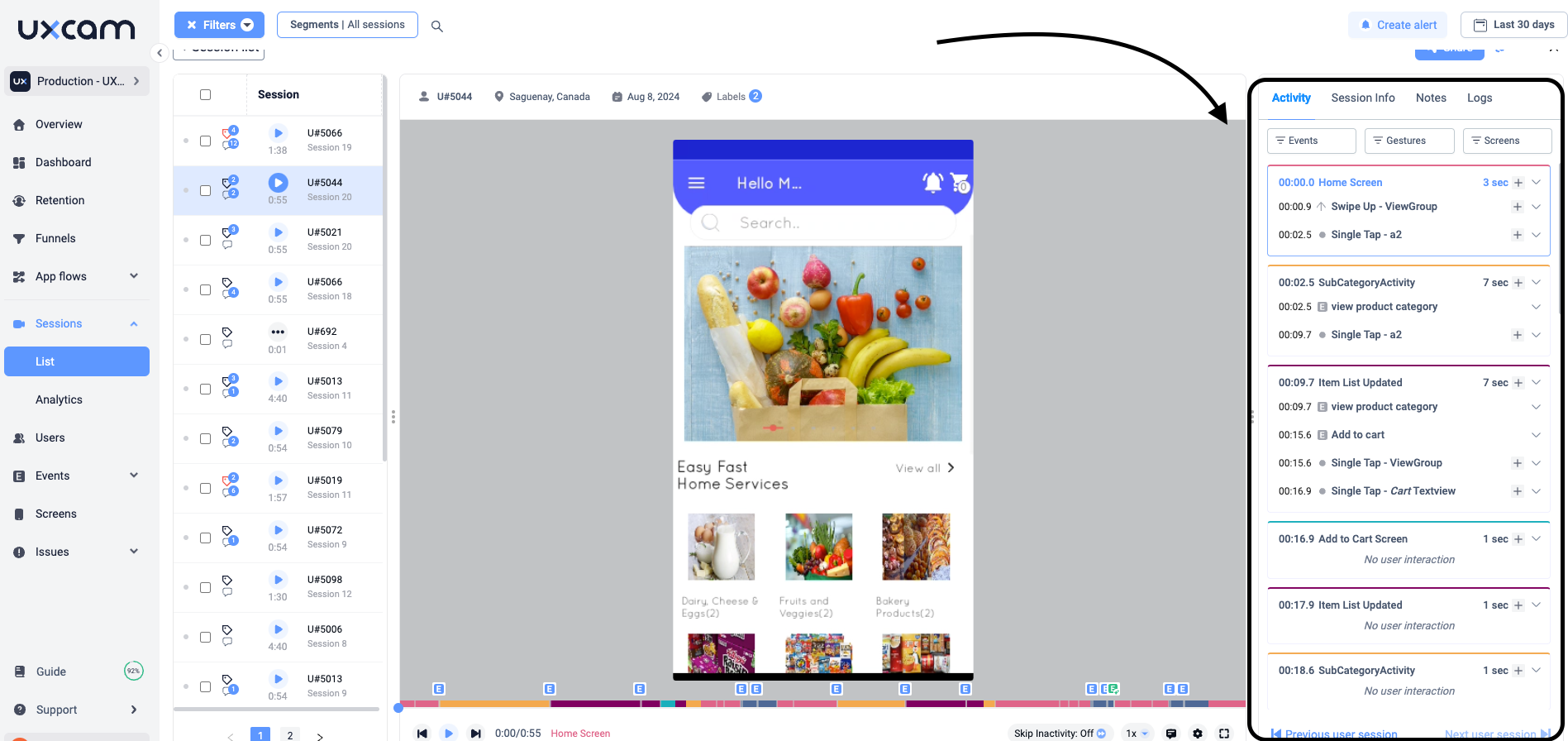

- Verify Crash Resolution
- If your application experienced crashes before the upgrade, check the SDK documentation for any relevant updates or fixes.
- Verify that those crashes no longer occur post-upgrade by thoroughly testing the application.
- Check events and user properties
- Ensure that all events and user properties are being tracked correctly post-upgrade.
- Compare the new data with the previous version to identify any discrepancies.
For checking events, you can go directly into the Events section in the dashboard, were you are going to be able to see the events you are logging into UXCam, or you can just directly check it on the Activity information section in the sessions list.
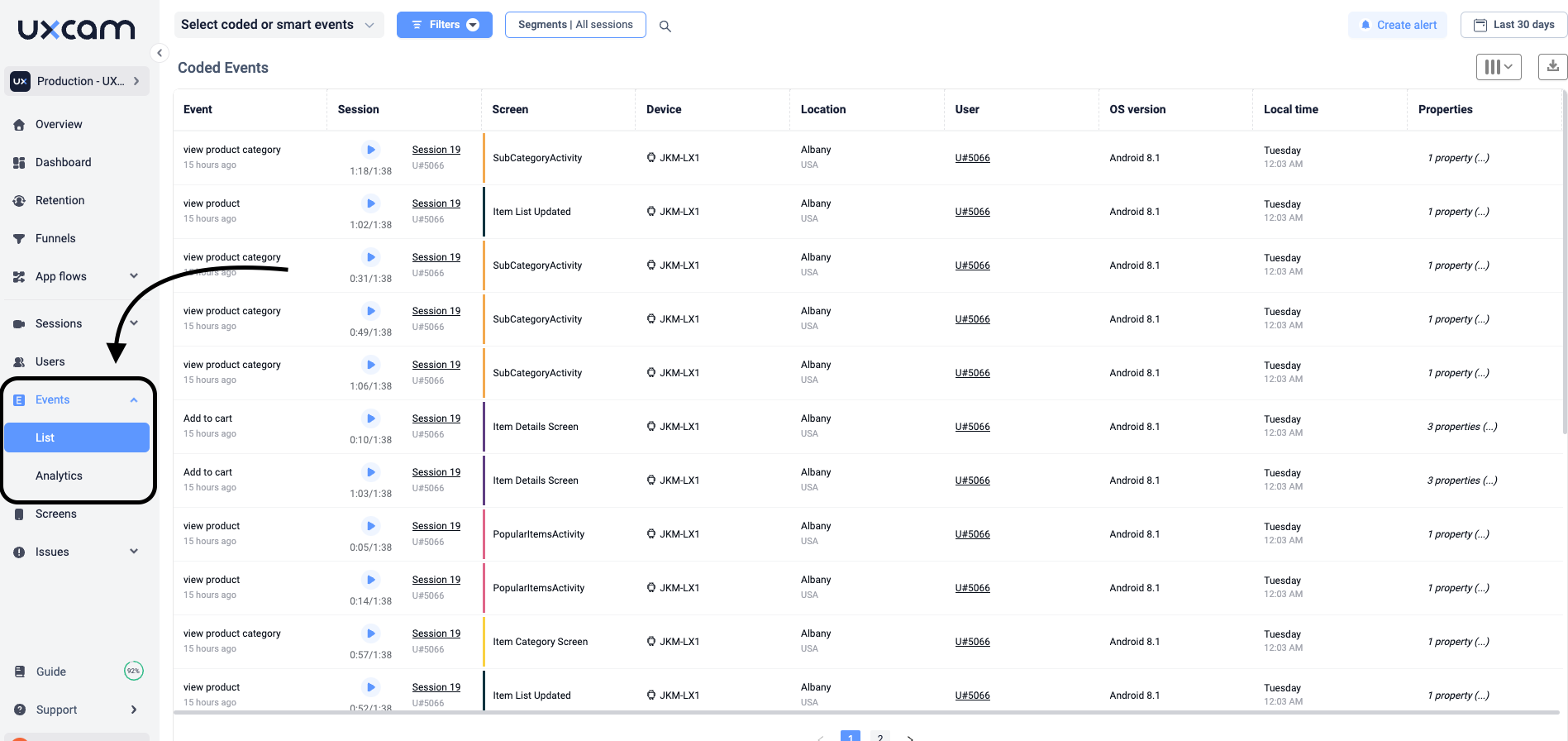
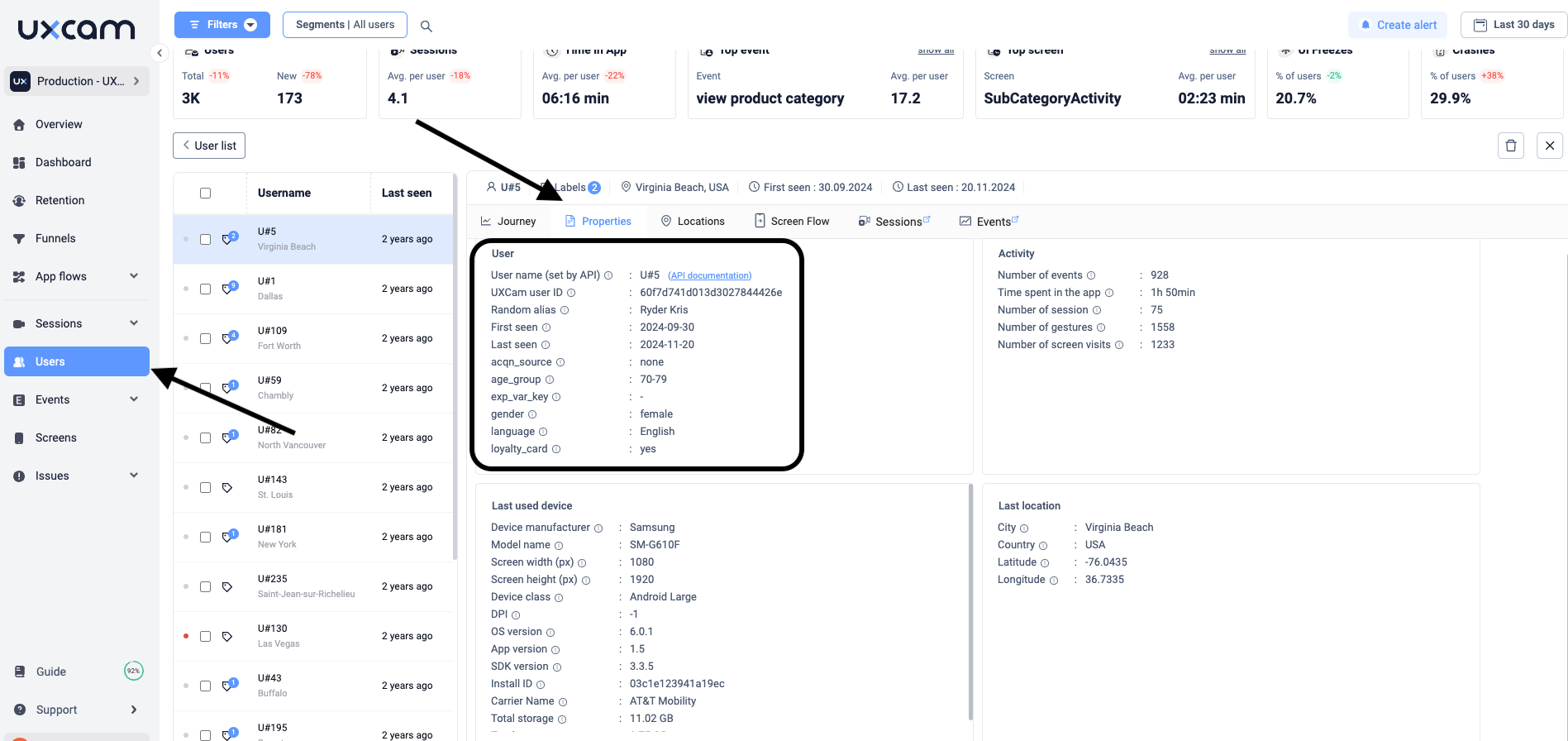
Additional Recommendations
- Documentation Review: Review the SDK documentation for any new features or changes that might impact your integration.
- Backup Data: Before initiating the upgrade, ensure that you have a complete backup of your current data and configurations.
- Testing Environment: Perform the upgrade in a staging or test environment first to identify any potential issues before deploying to production.
By following this checklist, you can ensure a seamless transition to the new SDK version, maintaining the integrity and performance of your application. If you encounter any issues or have questions, do not hesitate to reach out to our support team for assistance.
For further support and detailed guidance, please contact us providing a description of the problem that you are facing alongside with your current implementation of UXCam at [email protected].
Updated about 1 month ago
